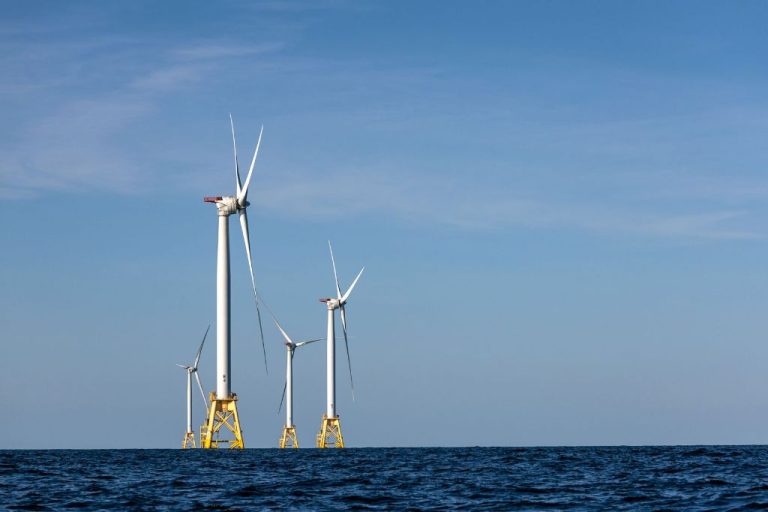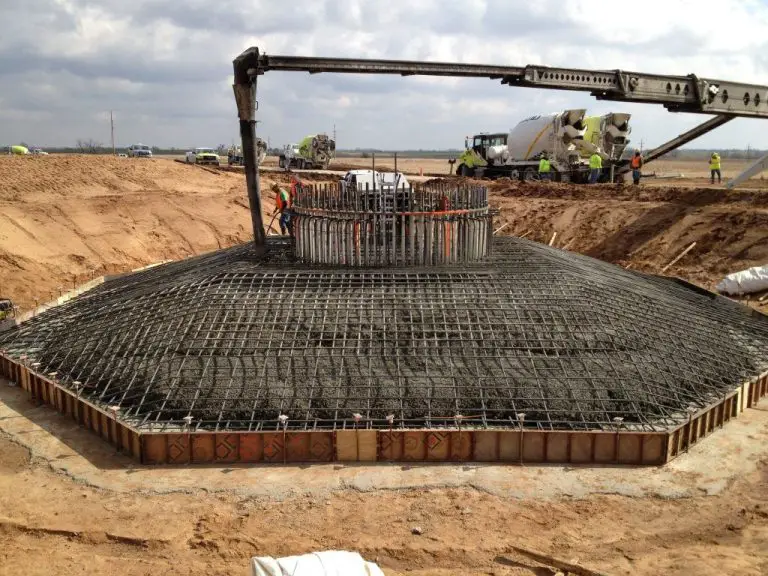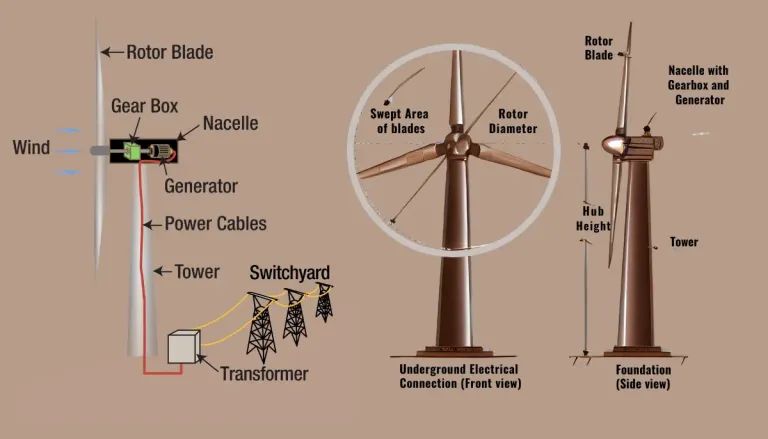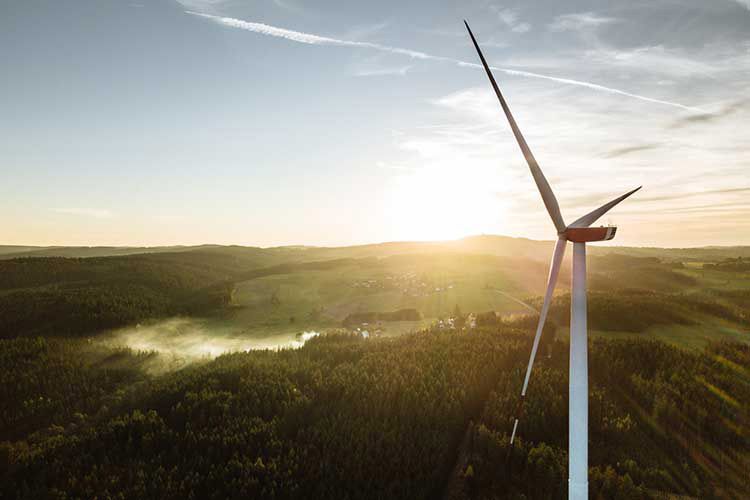Is Utah Good For Wind Power?
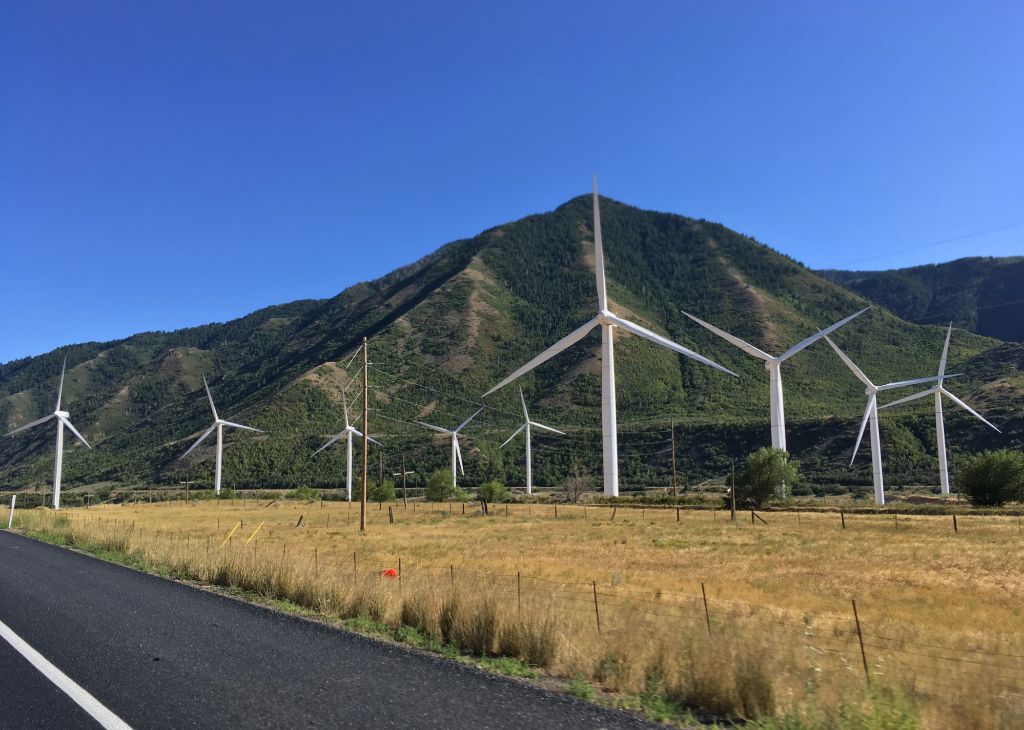
Wind power is one of the fastest growing sources of renewable energy in the United States. Total annual electricity generation from wind has grown from about 6 billion kilowatt-hours (kWh) in 2000 to about 380 billion kWh in 2021, according to the U.S. Energy Information Administration (EIA). Wind power accounted for 22% of new electricity capacity installed in 2022, second only to solar, according to the U.S. Department of Energy (DOE). The goal of this article is to evaluate Utah’s wind power potential and assess if it’s a good location for future wind farm development.
Utah’s Current Energy Mix
Utah relies primarily on coal and natural gas for electricity generation. According to a study by the Utah Inland Port Authority, as of 2022 approximately 61% of the state’s electricity came from coal, 21% from natural gas, 11% from hydroelectric power, 4% from wind power, and 3% from other renewable sources like solar. The share from coal has decreased in recent years, down from about 72% of Utah’s generation mix in 2008, while the share from natural gas and renewables has grown. Utah Inland Port Authority
Between 2008 and 2018, coal’s share of electricity generation in Utah fell from 72% to 54%, while natural gas increased from 16% to 31%, wind power grew from zero to 6%, and utility-scale solar from zero to 3%. The overall trend has been a shift away from coal toward cleaner sources like natural gas, wind, and solar. Chegg
Utah’s Wind Power Potential
Utah has significant potential for wind energy development according to wind resource maps and data. The National Renewable Energy Laboratory (NREL) has conducted detailed wind mapping for Utah showing wind power densities and speeds across the state. According to the NREL data, Utah has Class 3 winds, which are suitable for most utility-scale wind turbines, across large parts of the state. Some areas, like western Utah, have even stronger Class 4-7 winds that are ideal for wind power generation.
One NREL study found Utah could potentially install over 13,000 MW of wind capacity, generating around 39,000 GWh annually. This is enough to power over 3 million homes. Utah’s wind potential ranks 9th highest amongst U.S. states. However, only a small fraction of this capacity has been developed so far. Multiple studies, including from the Utah Geological Survey, have highlighted the significant gap between Utah’s wind energy resources and wind power development. With the right policies and market conditions, Utah could tap much more of its world-class wind potential.
Overall the data shows Utah has abundant, high-quality wind resources. The main barriers are around economics, siting, and policies rather than lack of wind energy potential. With improvements in these areas, Utah is well-positioned to significantly expand wind power generation.
Current Wind Farms in Utah
There are several major wind farms currently operating in Utah, some of the notable ones include:
- Milford Wind Corridor Project – Located in southwest Utah in Millard and Beaver counties. It has a capacity of 306 MW, making it the largest wind farm in Utah. It came online fully in 2011 (https://en.wikipedia.org/wiki/Wind_power_in_Utah).
- Spanish Fork Wind Farm – Located in Spanish Fork, Utah County. It has a capacity of 18.9 MW and became operational in 2009 (https://extension.usu.edu/sustainability/research/wind-power-in-utah).
- Latigo Wind Project – Located in San Juan County. It has a capacity of 201 MW and became fully operational in 2012.
- Blundell Geothermal Plant – Located near Milford, Beaver County. It has an 11 MW wind farm in addition to geothermal power generation.
Some other medium to small scale wind farms are located near siguard in Rich County and Spanish Valley in San Juan County.
Challenges for Wind Power
To meet the upfront construction costs of wind farms, significant resources are needed. Installing wind turbines accounts for over three-quarters of the construction costs, ranging from $1,500 to $2,500 per kilowatt of capacity (“Urban Wind Turbine Challenges Overcoming Obstacles for Progress”, 2023). In comparison, coal plants are significantly less expensive at $1,000 per kilowatt and natural gas around $700 per kilowatt. Securing financing for multi-million dollar investments can pose a hurdle for wind power growth.
Local zoning ordinances and land use regulations can restrict the height and location of wind turbines, which need sufficient wind access. Public concerns over noise, visual impacts, and property values may lead to restrictive policies. Streamlining and standardizing permitting processes could assist with wind farm deployment.
Wind power relies on transmission lines to connect generation with demand centers. Major grid upgrades and new transmission infrastructure involves lengthy lead times and complex coordination. Grid congestion can prevent optimal wind site selection and curtailment. New high-voltage transmission lines are vital to unlock land with top wind resources.
The intermittent nature of wind poses grid integration and reliability risks. Advanced forecasting helps grid operators prepare for variability. Energy storage systems that save power when the wind blows for later use help smooth out fluctuations. Still, integrating large-scale wind generation requires careful power system planning and flexibility from grid assets (“Wind Energy Storage Engineering Innovative Solutions for Intermittency”, 2023).
Advantages of Wind Power
Wind power offers several key advantages that make it an attractive energy source for Utah.
First, wind power has very low operating costs once the turbines are installed. The fuel for wind turbines is free since it relies on naturally occurring wind. There are some maintenance costs for the turbines, but overall operating costs are minimal compared to fossil fuel power plants.
Second, wind power emits no greenhouse gases or air pollution. Generating electricity from wind does not require burning fuels, so it has minimal environmental impact. This helps Utah reduce its carbon footprint and meet clean energy goals.
Third, wind is a renewable energy source. Unlike fossil fuels which are finite, the wind offers an unlimited, inexhaustible supply of fuel. Expanding wind power supports energy independence by using local resources.
Finally, wind power bolsters the local economy through job creation, land lease payments to farmers and ranchers, and increased tax revenue for communities and the state. Rural areas in particular can benefit economically from new wind farm projects.
Government Policy
The U.S. federal government offers a variety of incentives and policies to promote wind energy at the state and federal level. The Production Tax Credit (PTC) provides a tax incentive of 2.5 cents per kilowatt hour for utility-scale wind energy projects, which has supported wind energy development since 1992 (U.S. Department of Energy). However, the tax incentive is set to phase out by 2025. The Investment Tax Credit (ITC), which provides a 26% tax credit for wind projects starting construction by 2023, has also helped support wind energy growth (DOE).
State policies like renewable portfolio standards also can drive wind energy deployment, including in Utah. As of 2021, 11 states mandate utilities source a portion of their electricity from wind energy (DOE). Utah currently does not have a renewable portfolio standard, but voluntary utility goals have supported some wind power development.
At the federal level, permitting and review processes aim to encourage responsible siting of wind projects on public lands, while balancing environmental impacts. For example, the Bureau of Land Management has approved over 500 wind energy rights-of-way covering over 1 million acres, following environmental reviews (DOE).
Wind Power Economics
The cost of wind power has declined substantially in recent years, making it increasingly competitive with conventional power generation methods like coal and natural gas. According to a 2024 study published in ScienceDirect, the levelized cost of electricity from onshore wind is projected to be $28-48 per MWh in 2030, compared to $33-62 for coal and $42-78 for natural gas [1]. This cost competitiveness is driven by technology improvements, manufacturing scale-up, and more efficient wind farm operations. In particular, increased turbine size and capacity factors have lowered costs. The DOE found wind energy in Utah provides a stable, low-cost energy source that insulates consumers from fossil fuel price volatility [2].
Looking forward, wind power costs are projected to continue falling. According to NREL, utility-scale land-based wind has the potential to decrease costs by 25-41% by 2030 and 35-53% by 2050 compared to 2020 costs, due to larger turbines and other advances [3]. This continued cost reduction will further improve wind’s economic competitiveness.
Future Outlook for Wind Power
The future outlook for wind power in Utah is one of continued growth and expansion according to projections and renewable energy targets set by the state. Utah aims to generate 20% of its electricity from renewable sources by 2025, up from around 15% in 2021. To meet this goal, significant investments will need to be made in wind energy.
According to the American Clean Power Association, Utah has the potential to produce over 9,000 megawatts of wind power, which would be enough to power 3 million homes. However, as of 2021, the state only had 879 megawatts of installed wind capacity. This demonstrates the large room for growth in wind generation over the coming years.
Major wind projects are already underway that will add hundreds of megawatts of capacity. The Ekola Flats wind project being developed by Clearway Energy Group will provide 250 megawatts of wind power. Other planned projects like the Latigo Wind Park (300 MW) and the Morgan Wind Project (375 MW) will also boost wind capacity.
With supportive government policies, excellent wind resources, and increasing demand for renewable power, analysts predict wind energy will continue expanding rapidly in Utah. The Department of Energy estimates wind capacity could grow 2-3 times by 2030. If these growth trends persist, Utah may be able to fully capitalize on its massive wind power potential within the next decade.
Conclusion
In summary, Utah has significant potential for wind power but also faces some challenges. The state has excellent wind resources, especially in rural areas, that could support substantial growth in wind generation capacity. However, factors like the variability of wind, high upfront costs of wind farms, environmental concerns, and policies that favor conventional energy limit the expansion of wind power currently. While wind is unlikely to dominate Utah’s energy portfolio, targeted investments in favorable high-wind areas and community engagement could allow wind to provide an increasing share of energy over time. With the right policies and incentives, Utah could tap more into its wind to diversify its energy mix, spur economic growth, and advance its renewable energy goals.


